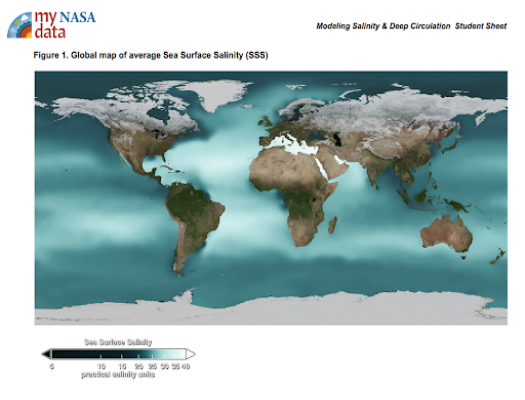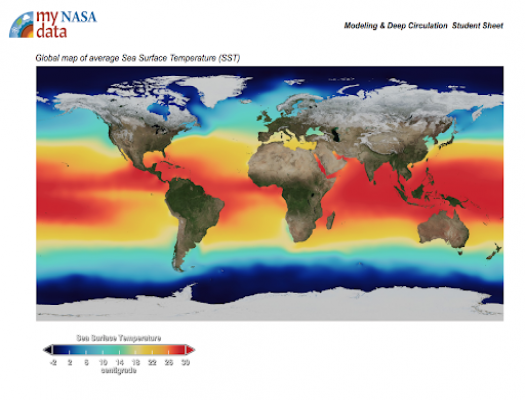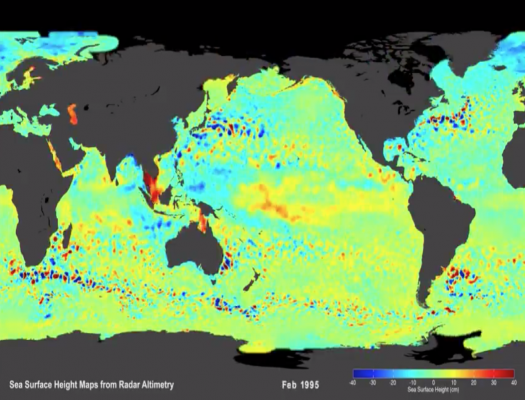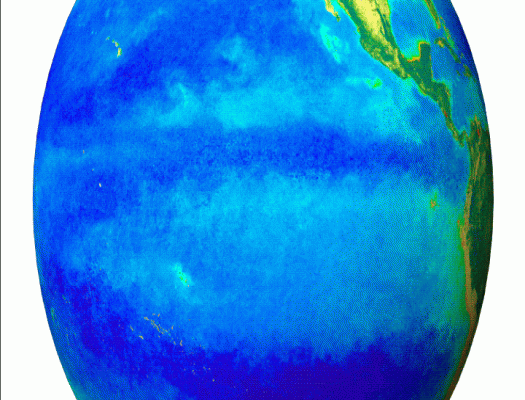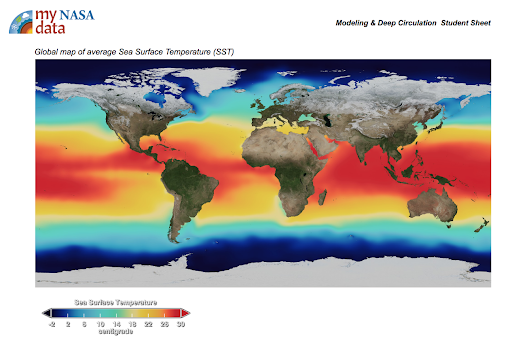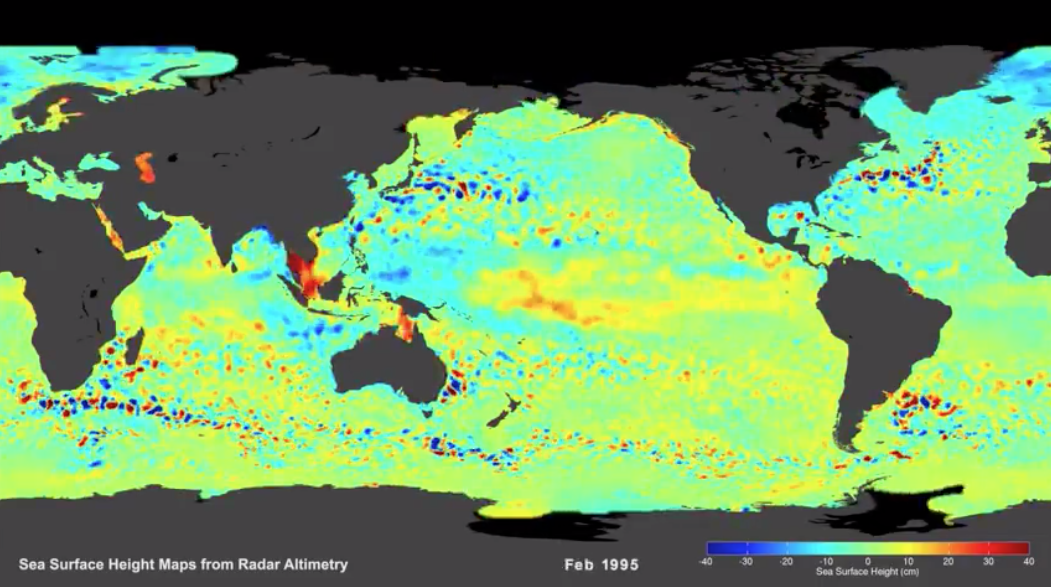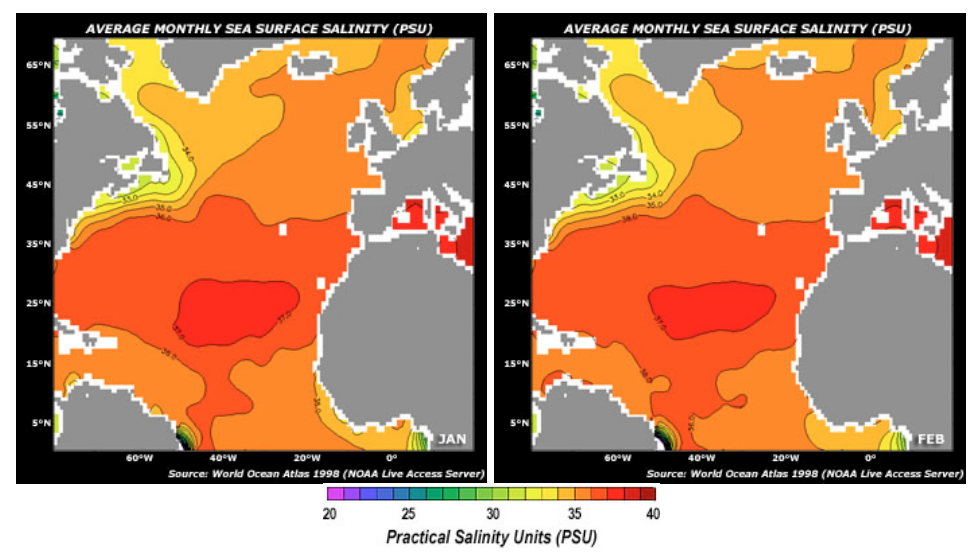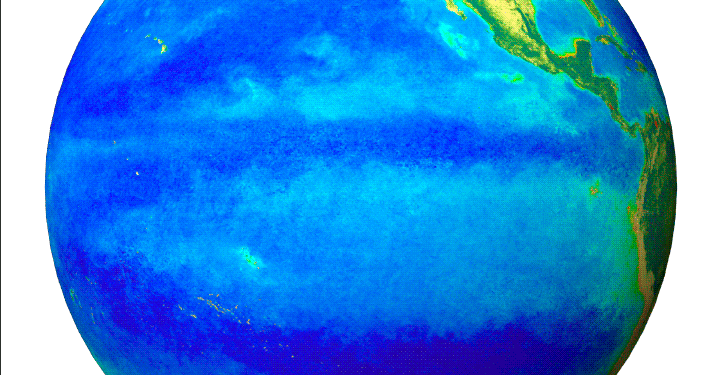Ocean waters are constantly on the move; understanding how and why they move is not an easy task. However, it is an important job considering that these waters affect Earth’s climate, as well as habitats for plants and animals, even on land.
>> Read More >>
Just one moment,
loading Hydrosphere...
Featured Lesson Plans
-
-
-
-
-
Grade Level: 6-8, 9-12
In this experiment, students make a claim about the cause of ocean currents and then develop a model to explain the role of salinity and density in deep ocean currents. This lesson is modified from "Visit to an Ocean Planet" Caltech and NASA/Jet Propulsion Laboratory.
Grade Level: 6-8, 9-12
In this activity, students make a claim about the cause of ocean currents and then develop a model to explain the role of temperature and density in deep ocean currents. This lesson is modified from "Visit to an Ocean Planet" Caltech and NASA/Jet Propulsion Laboratory.
Grade Level: 6-8, 9-12
Students analyze the relationship between sea surface height and ocean surface currents by graphing sea height using satellite data. Note: This lesson is modified from NASA's TOPEX/Poseidon lesson plan.
Grade Level: 6-8, 9-12
Students will observe monthly satellite data of the North Atlantic to identify relationships among key science variables that include sea surface salinity (SS), air temperature at the ocean surface (AT), sea surface temperature (ST), evaporation (EV), precipitation (PT), and evaporation minus pre
Grade Level: 6-8, 9-12
Students will examine a 2014-2015 El Niño Southern Oscillation (ENSO) event to identify relationships among sea surface height, sea surface temperature, precipitation, and wind vectors.
Previous
Next
Grade Level: 6-8,
9-12
In this experiment, students make a claim about the cause of ocean currents and then develop a model to explain the role of salinity and density in deep ocean currents. This lesson is modified from "Visit to an Ocean Planet" Caltech and NASA/Jet Propulsion Laboratory.
Grade Level: 6-8,
9-12
In this activity, students make a claim about the cause of ocean currents and then develop a model to explain the role of temperature and density in deep ocean currents. This lesson is modified from "Visit to an Ocean Planet" Caltech and NASA/Jet Propulsion Laboratory.
Grade Level: 6-8,
9-12
Students analyze the relationship between sea surface height and ocean surface currents by graphing sea height using satellite data. Note: This lesson is modified from NASA's TOPEX/Poseidon lesson plan.
Grade Level: 6-8,
9-12
Students will observe monthly satellite data of the North Atlantic to identify relationships among key science variables that include sea surface salinity (SS), air temperature at the ocean surface (AT), sea surface temperature (ST), evaporation (EV), precipitation (PT), and evaporation minus pre
Grade Level: 6-8,
9-12
Students will examine a 2014-2015 El Niño Southern Oscillation (ENSO) event to identify relationships among sea surface height, sea surface temperature, precipitation, and wind vectors.
Ocean Circulation Patterns landing page. Explore maps, graphs, data, and related education resources. These resources include lesson plans, mini lessons, activities, and datasets for teachers and students.


